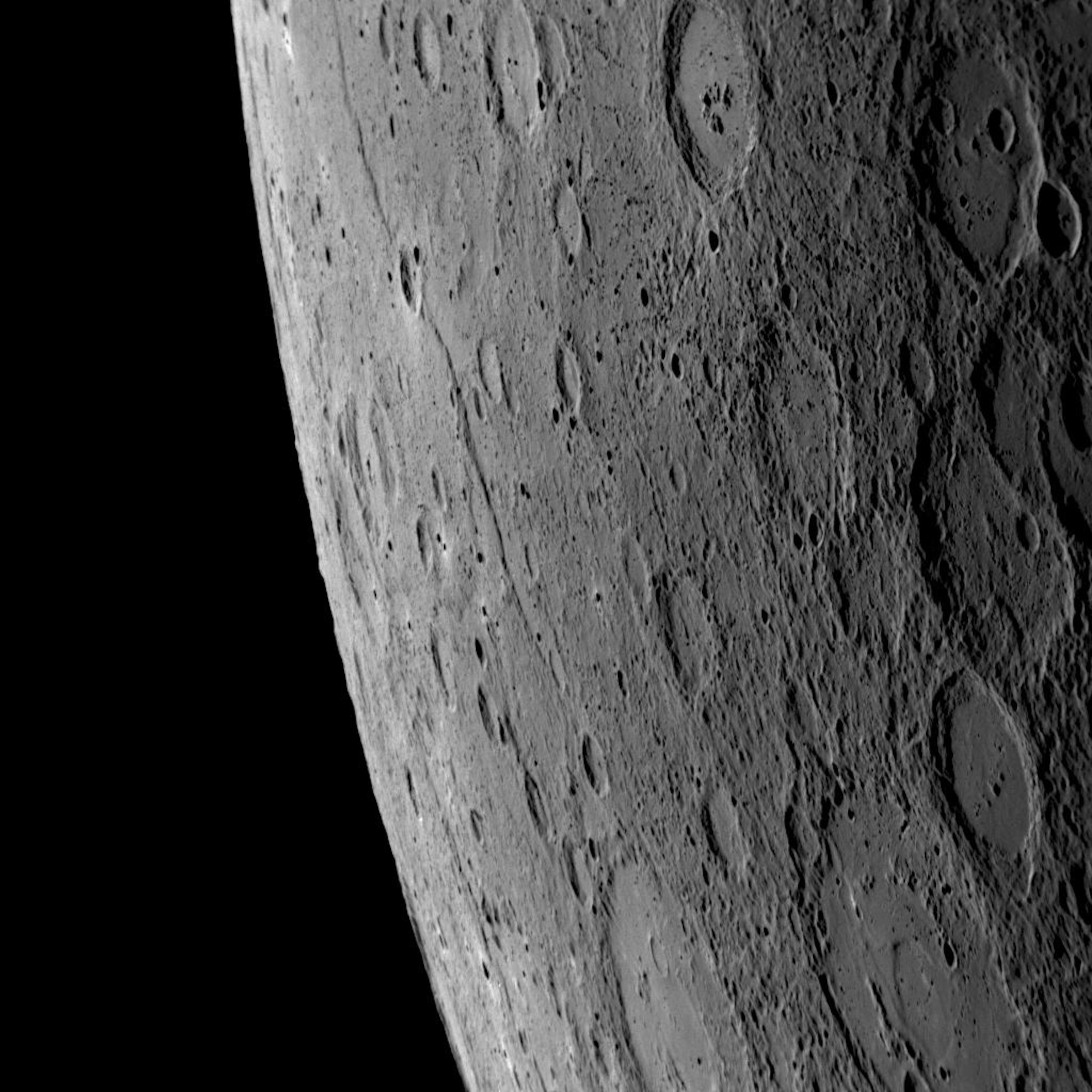
Solar System’s Smallest Planet Is Shrinking
Mercury is getting smaller. Over its roughly 4.5 billion years of existence, the dense little planet’s diameter could have shrunk by as much as 14 kilometers, a study published today in Nature Geoscience reports.
It might sound strange, but a shriveling Mercury is not unexpected. In fact, theories describing how the planet’s core cools over time predicted that by now, Mercury’s diameter should have lost around 10 kilometers. But until this new analysis, teams had only been able to measure a 7-kilometer contraction at most. Now, scientists have used data gathered by NASA’s MESSENGER probe, which has been orbiting Mercury since 2011, to calculate how much Earth’s odd little neighbor has shrunk.

Unlike Earth’s, Mercury’s lithosphere – essentially, a planet’s outermost shell – isn’t broken up into a patchwork of tectonic plates that could slip beneath one another to accommodate shrinkage. It’s just one big lid. So instead, Mercury’s surface crinkles, forming puckered geological features called lobate scarps, which are long, steep cliffs with curved edges, wrinkle ridges – less pronounced than lobate scarps – and high-relief ridges.
“Some scarps, like Enterprise Rupes, in Mercury’s southern hemisphere, are truly gigantic – 600 miles long and 2 miles high,” says study author Paul Byrne, a planetary geologist at the Carnegie Institution for Science in Washington, D.C. “Other scarps are much smaller.”
Conceptually, these surface wrinkles are similar to those that appear on the skin of a prune or a raisin as the originally plump fruit dries and shrivels. But Mercury isn’t shrinking because of water loss. It’s getting smaller because its enormous metallic core is cooling and contracting.
In general, more contraction produces taller, longer, and possibly steeper scarps, Byrne says. Measuring the length and height of these features lets scientists calculate how much shrinking the planet has been doing. In the new study, Byrne and his colleagues identified and measured a total of 5,934 scarps and ridges on Mercury’s surface. Then, based on that data set, they calculated that the planet’s diameter could have shrunk by as little as 9.2 kilometers, or by as much as 14.2 kilometers.
In other words, these observations are much more in line with predictions, and are helping resolve a discrepancy between theory and observation that has existed since Mariner 10 first swooped in and took some photos of the little planet in the mid-1970s. (Related: “Mercury, the Smallest Planet, Is Getting Even Smaller, Scientists Say.”)
What’s perhaps unexpected is the observation that the planet is not uniformly contracting – the scarps and wrinkles aren’t evenly distributed on Mercury’s surface. Some regions, like the Northern volcanic plains, show more evidence of shrinkage than others.
“I think it’s probably the result of variations in the strength of rocks across and within the planet,” Byrne says. “Some parts of the planet’s lithosphere are likely stronger than others, and so the outcome of their response to stresses due to global contraction will probably look different – either in terms of shapes of structure, distribution of structures, or both.”
It’s just another of our weird little neighbor’s quirks; indeed, the first rock from the sun has proven to be reliably enigmatic. Mercury is extremely dense. Its metal core, which occupies about 85 percent of the planet’s radius (in contrast to Earth’s core, which comprises roughly 50 percent) – has a layered architecture that isn’t seen anywhere else in the solar system. Mercury’s orbit is the most elliptical of all the sun’s planets, and the planet rotates asynchronously, completing three rotations for every two trips around the sun. Put more simply, one year on Mercury lasts 88 Earth-days, and one day on Mercury is just a bit longer than 58 Earth-days. That would make for a confusing calendar.
And, surprisingly, there’s water ice at the roasted little planet’s poles.
